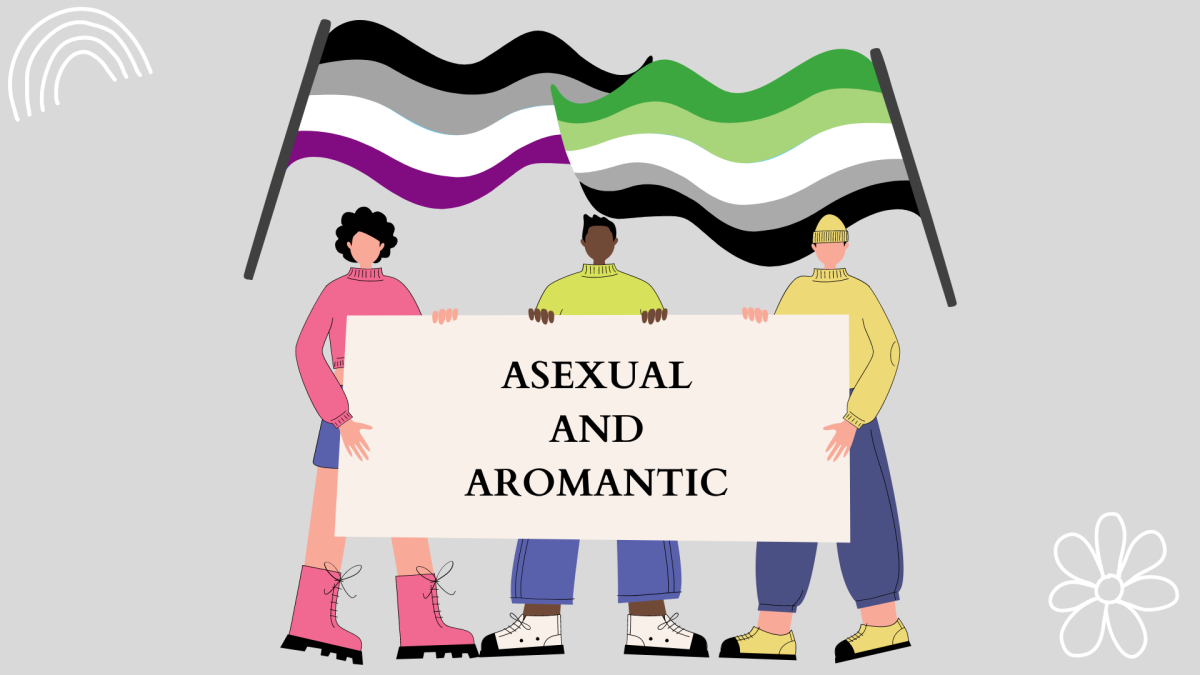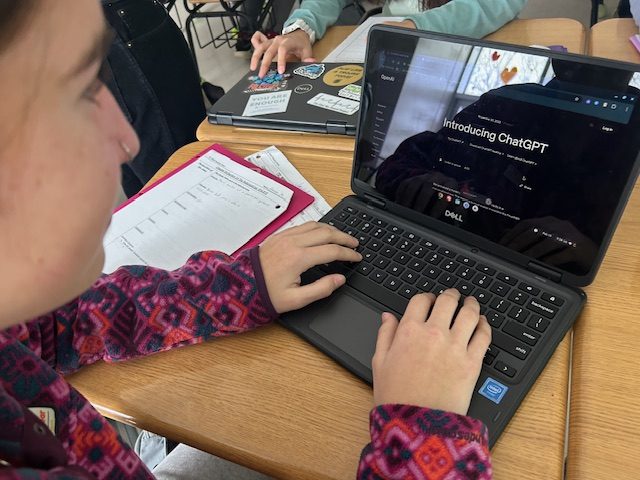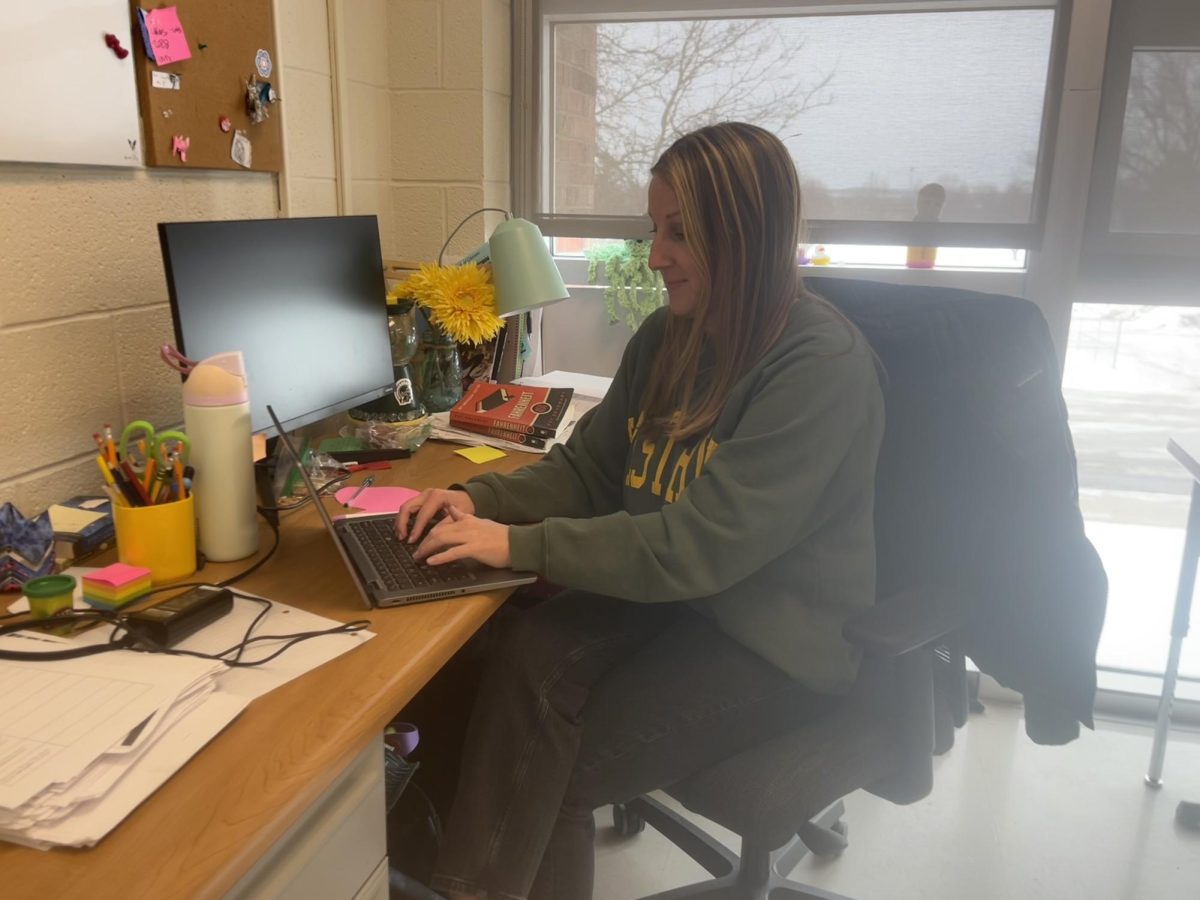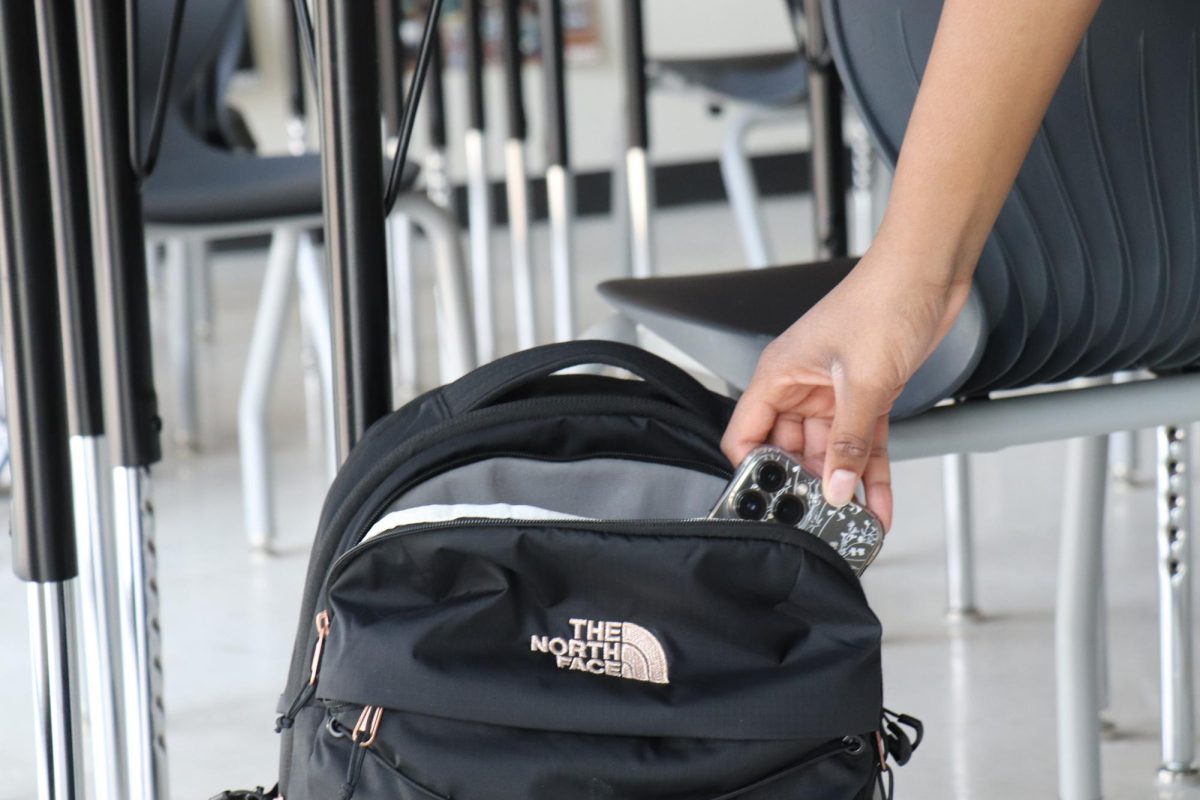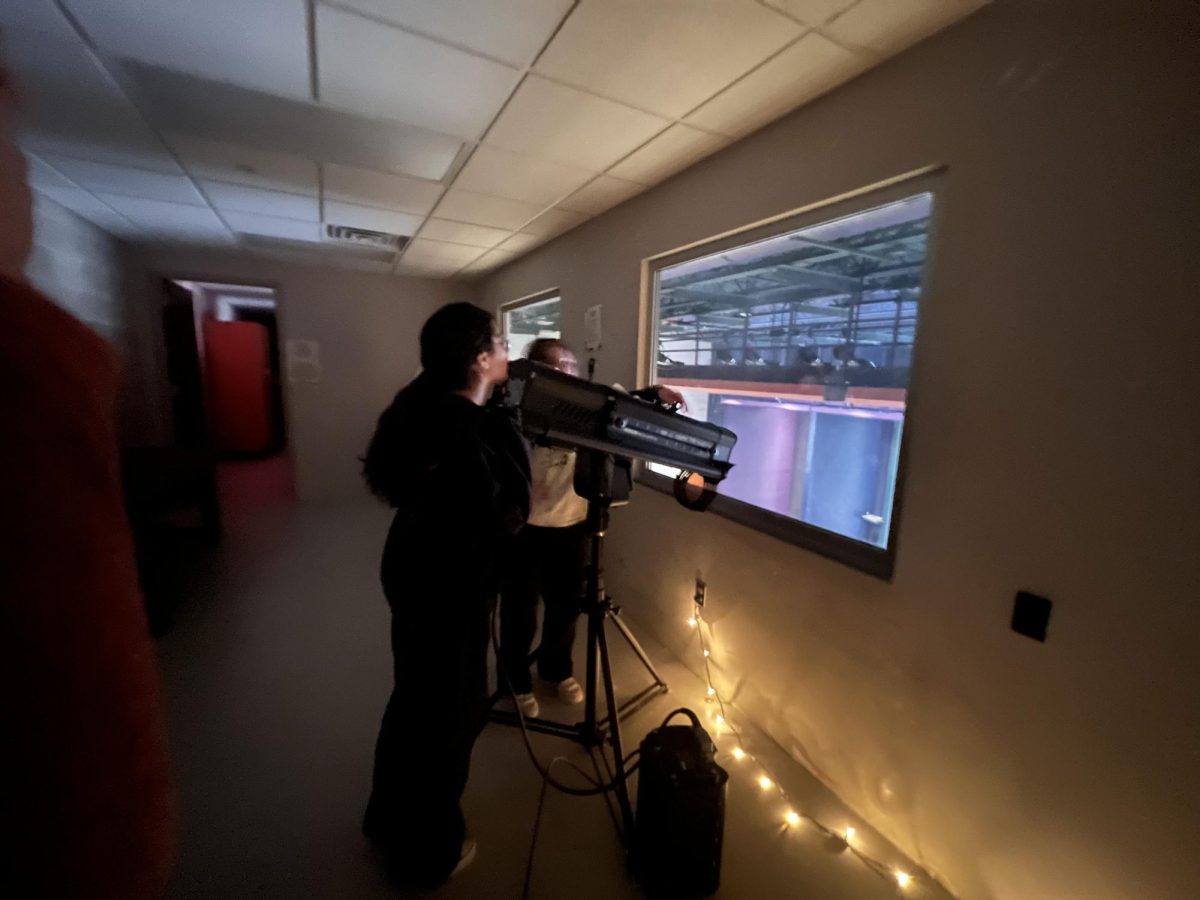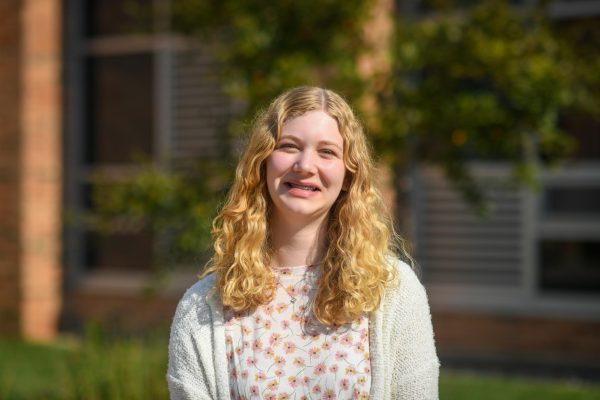West High is known to have a very diverse cast of students and staff that work continuously on understanding one another. Even so, that doesn’t mean that we can’t further improve our knowledge of and empathy towards each other.
There are some LGBTQIA+ identities that are often talked about in classrooms, so students tend to know more about them than others. Unfortunately, for some identities, there are not as many educational resources out there, causing those identities to be less known. Two spectrums that aren’t frequently discussed in classrooms are asexuality and aromanticism.
With less knowledge of these identities, people could stereotype and make assumptions about each other. This can lead to the spread of misinformation. This article is intended to provide factual information about aromanticism and asexuality in order to address common misconceptions.
With the help from West students on the aromantic and asexual spectrums, let’s learn more about these identities.
Being asexual means someone feels little to no sexual attraction, and being aromantic means someone feels little to no romantic attraction. Someone can be asexual but not aromantic, or vice versa. People can also be both aromantic and asexual, which can sometimes be abbreviated as aroace.
Phoebe Ephraim-Gill ’25 said that a common misconception is that asexuality and aromanticism mean the same thing.
“Asexuality does not mean no romantic attraction. You can be a lesbian and asexual,” they said. “I also wish people knew that you can be heterosexual and asexual. … Asexuality is a spectrum, with some other labels [on the spectrum] such as sex repulsed, sex positive, sex negative, sex neutral, etc.”
When a lot of people think of the term ‘asexual’, they think it means that an asexual person has never had sex in the past, and never feels any sort of sexual attraction. As Ephraim-Gill said, it is not just black and white; there is a gray area. People can be anywhere on the spectrum; some people have had sex in the past but it doesn’t reflect where they stand now, and others haven’t had sex before. Some feel infrequent sexual attraction, or only feel sexual attraction once they have a close bond with someone. How much or how little sexual attraction someone feels, when they feel it, and who they feel it with can all be different depending on where they are on the spectrum.
Eric Clark ’27 identifies himself on the asexual spectrum. “My sexual identity is demisexual. This means I have to have a very deep and long standing relationship with someone [before wanting to have sex with them],” he said. According to The Trevor Project, demisexuality is where someone can’t feel sexual attraction towards a person until they have a deep emotional connection with someone.
This goes for aromanticism as well: people can be anywhere on the aromantic spectrum. Some people never feel romantic attraction, some do only sometimes, and some do but only with certain people at certain points in a relationship. There are lots of identities that are part of the aromantic spectrum. To learn more about them, visit Aromantic-spectrum Union for Recognition, Education, and Advocacy (AUREA). To learn more about the asexual spectrum, visit The Asexual Visibility and Education Network (AVEN).
Since asexuality and aromanticism are not talked about as often as other identities, it can be a long journey for some people to discover this part of themselves. Nicole Lee ’24 said that she was aware of the asexual spectrum, but didn’t believe it applied to her for a long time.
“It wasn’t until I was surfing the internet, seeing all these people post thirst tweets and which celebrities they want to sleep with when I thought to myself, ‘Who does that? Who just imagines having sex with a person like that? That’s, like, an actual person they’re talking about.’” she said. “And then I realized, ‘Who do I imagine having sex with if not an actual person?’ when it finally clicked.”
Lily Zukin ’24 agrees that discovering their aroace — aromantic and asexual — identity did not come all at once, but took time.
“Discovering that I don’t feel something that had been shoved into my face all my life as a universal experience wasn’t easy,” they said. “But I had friends who knew what they were talking about and I had Google. I don’t remember when something clicked, but it was not long after quarantine and I was about 15.”
An anonymous aroace student stated in an interview that they began to feel isolated from their peers in middle school and high school. They said they found the terms “aromantic” and “asexual” in 8th grade.
“I just felt like there was something that made me unable to relate to a lot of my peers on some level, and I could never fully put my finger on it,” they said. “Eventually, I did manage to click with a small group of people, and I cannot begin to describe how relieving it was to talk to them each day. … Slowly, I realized that it was crushes and the desire to be in a relationship that made me feel so isolated.”
When someone doesn’t know a lot of people with the same romantic or sexual identity as them, it is normal for them to feel isolated and like they don’t fit in. The best thing to do is to find a community of understanding, supportive people.
Ephraim-Gill said they found friends that are asexual too, and also found the LGBTQIA+ community. “It’s very nice to be able to talk about romantic relationships without the context of sex,” they said.
Colors club can be a safe space for people who are on the aromantic and asexual spectrums. Colors is a student-run organization that unites all LGBTQIA+ identities at West High. Members of the club discuss topics relating to LGBTQIA+ issues and allyship, and also do fun activities together. This club can be a good way to meet new people and find a community.
Even after finding a supportive community, Zukin said they still feel different from their friends. “I’ve found the LGBTQ+ community in real life and some things online, but even with supportive friends, I’m still different. There’s still something off. I’m not looking for relationships, not even a [queerplatonic relationship]. Though the LGBTQ+ community is very positive and open-minded, there are still exclusionists who exist within that community.”
Like Zukin said, there are some who exclude people who identify as aromantic and/or asexual, even within the LGBTQIA+ community. Without proper knowledge of different identities, misconceptions can easily form. WSS sent out a survey to all West students to see what the most common misconceptions about aromanticism and asexuality are at West High. The data from that survey are shown below at the end of the article. From the data, we can see that one common misconception about asexuality is that all people on the asexual spectrum are opposed to the idea of sex, and do not like physical touch.
“[People think] that I hate all ideas of sex and I am disgusted about it. I would say I have more knowledge about the topic than any of my friends,” an anonymous student said in an interview.
Lee added that another misconception is that people who identify themselves on the asexual spectrum just “haven’t met the right person yet.” The data shows it is also common for people to believe that asexual and aromantic people are “too young to know” or “haven’t fully matured yet.”
“All around me, people were talking about their crushes and who they liked,” the anonymous aroace source said. “They also started talking about sex. However, I held off on identifying in any certain way until high school, mostly for fear that I was simply ‘too young to know.’ Eventually, I finally just accepted that I had never actually been attracted to a single person in my entire life, and that ‘asexual’ and ‘aromantic’ both felt like far better ways to describe me than ‘straight,’ which is what I was basically told my entire life that I was.”
Identity is a fluid concept, and can change over time, like it did for the aroace source.
“There’s no ‘too young’, and if [you] change later, that’s fine because people change. Everyone does it all the time! It’s a part of life to change,” Zukin said.
One of the most common misconceptions about aromanticism in West High is that people who are part of the aromantic spectrum do not feel love.
“There’s kind of an assumption that being asexual or aromantic means that there’s something wrong with you,” the anonymous aroace source said. “Also, if you don’t feel romantic love, then you must be a colder, more heartless person than most people. To be quite honest, that second assumption is why it took me so long to accept that I’m aromantic.”
Some people who are part of these spectrums choose to be in romantic and/or sexual relationships, and some choose to focus on friendships.
“I love people so much. My friends are the most important things to me, and sex and love … can exist without the other, and it’s okay to want both or neither,” Josie Schwartz ’25 said. “I’m happy as I am, and change is something we have to be open to. If we cement our identities, we limit ourselves and future experiences. Be comfortable as yourself and be comfortable with your identity changing.”
The West High survey on aromanticism and asexuality revealed that some students at West might be confusing asexuality and abstinence. The major difference between asexuality and abstinence is that abstinence is a choice, while asexuality is not.
With these misconceptions in mind, people can end up spreading misinformation and hurting other people, even if they do not do it purposefully.
Ephraim-Gill said that the poor media representation of asexuals and their friends openly talking about sex while Ephraim-Gill feels sex repulsed has led to them being hurt.
Schwartz agreed that she has been mistreated because of being asexual. “Sometimes people make jokes about [my identity], trying to be well meaning, and instead it comes off as ignorant,” Schwartz said. “People will try to understand and end up alienating me, asking why I don’t want to grow old with people, why I want to be alone forever. I don’t, but when people ask those questions, I feel more alone than before.”
Zukin said that they haven’t experienced any purposeful hate towards their identity. “[Aroace is] a very little-known identity; plus, I don’t see it as something to say every time I meet someone. The difference is that I recognize off-handed comments that are made common in society’s amatonormativity views and standards of people. … Amatonormativity is the assumption that all human beings pursue romantic and sexual relationships.”
Lee agreed that she hadn’t particularly been mistreated because of her identity. “But it’s always depressing to go online and see people talk about how they couldn’t see themselves date an ace person because they don’t actually understand how it works,” they said.
Everyone’s experiences are different, especially when it comes to identity. Some people face hate from friends, partners, and strangers, while other people haven’t experienced any direct hate, but it is still out there. This shows the importance of being well-educated, and learning more about identities before making assumptions about them, since people can end up severely hurting someone even if they don’t intend to.
“JaidenAnimations, a YouTuber, has made a video called “Being Not Straight” which I think was very helpful for people,” Zukin said. “There’s also a professional book called ‘Ace: What Asexuality Reveals About Desire, Society, and the Meaning of Sex’ by Angela Chen.”
There are other helpful websites to visit if you would like to learn more about asexuality and aromanticism, such as The Trevor Project, The Asexuality Visibility and Education, Network, and The Aromantic-spectrum Union for Recognition, Education, and Advocacy (AUREA). Ephraim-Gill also recommends going to pride events. “… But remember, labels change around the form of a person, so don’t expect to know everything about a person because you found a definition online,” they said.
In addition, Schwartz said that one of the best ways to learn about aromanticism and asexuality is by talking to people you know who are aromantic and/or asexual.
“Odds are you know someone, and the best way to learn is just by listening to them,” she said.
Listening to other peoples’ experiences and learning more about them is extremely important. Empathy is something we can all continue to grow and improve upon, even if we think of ourselves as very empathetic people. We can all continue to expand our knowledge of other people, and through that, we may learn more about ourselves as well.



